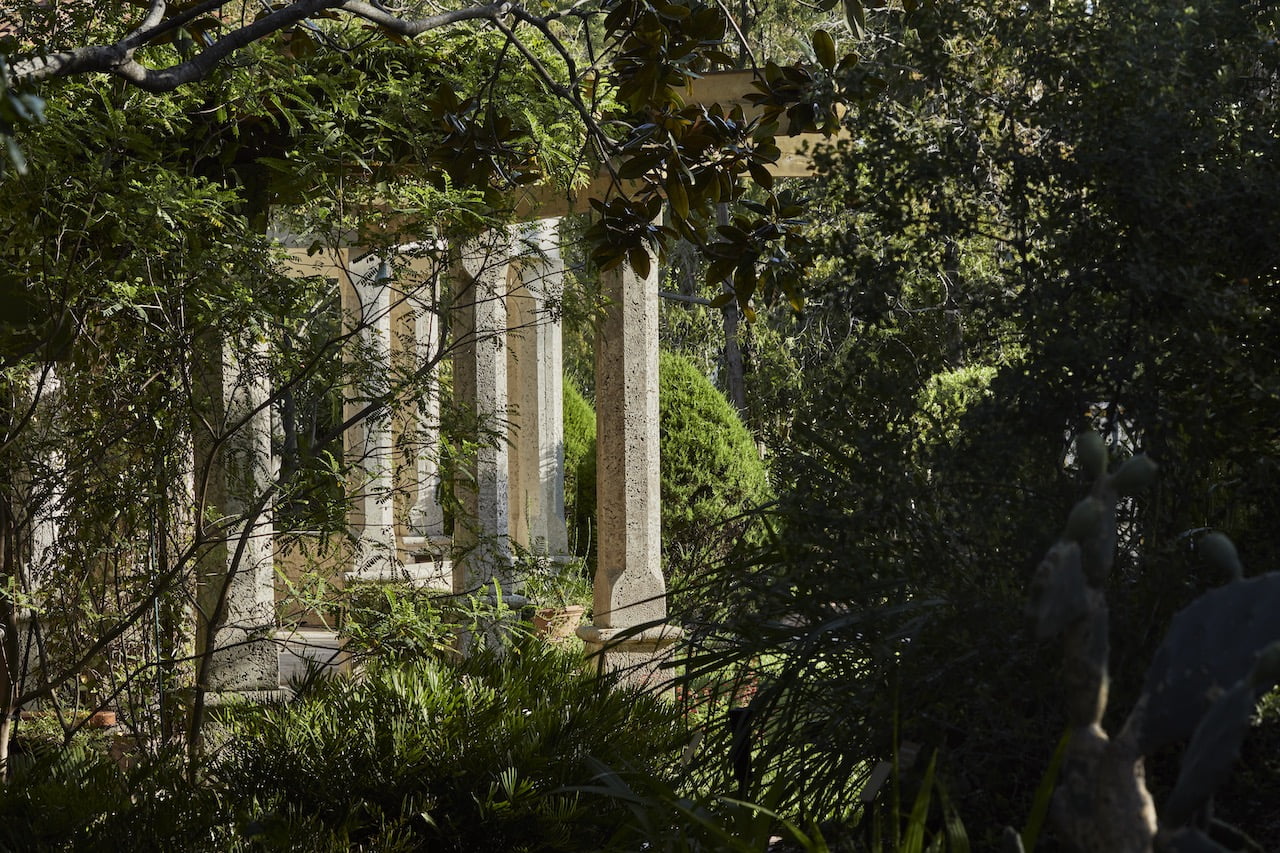Jorgé Sanchez is adaptable. As a 10-year-old refugee to America from Fidel Castro’s Cuba in 1959, he had to learn that skill early. Though the award-winning Palm Beach-based landscape architect is clearly proud of his heritage, he’s fine when clients who can’t pronounce Jorgé call him George. Flexibility is an important attribute in an aesthetic-service profession. But adaptability has its limits. So, when a “green” ordinance limiting the use of certain trees, palms, ground cover, shrubs, and vines was passed last fall by the Palm Beach Town Council, right in the midst of the COVID-fueled real estate boom, Sanchez got red-hot.
The ordinance was actually the second blow against garden designers on the barrier island. Once free to do whatever they pleased—which made Palm Beach a renowned showcase for gardens private and public—in 2019, they suddenly found themselves hemmed in by a rule requiring that 25 percent of new vegetation after growing to maturity (defined by ground coverage) be native to Florida. Then, in October 2021, that rule was tightened, requiring that 35 percent of plants (calculated by the number of plants in each of several categories) in brand-new or newly-replanted gardens be friendly to Palm Beach, a 7.8 square mile island.
Sanchez convinced several of his fellow landscapers to co-sign an open letter of protest, making clear their feeling that the new, Draconian rules would not only strangle their businesses, but also the refined and controlled—but nonetheless outrageously luxe—creative spirit that has made Palm Beach a leading garden spot ever since the Garden Club of Palm Beach was founded in 1928, “focused,” according to its web site, “on horticulture, the environment, conservation, and civic improvement.” The very next year, the club completed a town plan for the island, setting standards that still endure. Among them was encouraging greater variety in plantings, including non-native vegetation.
The ecological motives that inspired the native-plant ordinances are clear and unimpeachable. Landscaping with natives not only preserves those plants, but also sustains other wildlife that depends on them, including advantageous birds and insects, and helps species up and down the food chain—not least humans—survive and prosper. Non-native plants, aka aliens, often require fertilizers that negatively impact the environment, and excess irrigation; they also attract aggressive pests, which require the use of insecticides, which can drive away birds, kill beneficial plants and insects, exacerbate infestations, and threaten the health of animals, homeowners, and their families. Natives often require less water, less fertilizer, and less maintenance, cutting down on truck traffic and saving precious resources and money for both garden owners and their communities. That’s why many Florida counties mandate native plantings; adjacent Broward, for instance, has a 50 percent-native requirement.
“Gardening is so often thought of as old-fashioned,” says Edwina von Gal, the landscape designer-turned-environmentalist and founder of the nonprofit Perfect Earth Project, whose work in Palm Beach has led her to champion the native plants rules. She says her competitors there helped inspire her. “They were so concerned by the amount of pesticide spraying and started creating habitats for endangered monarch butterflies and protecting manatees. So why not switch out exotic and highly dependent plants for plants that don’t require expensive and harmful practices to survive? Plants that served a garden aesthetic of the past need to be rethought. Everything else in our lives changes. Why are gardens stuck in the past? They should be rooted in the modern.”
For PALMER Vol. 2, author and journalist Michael Gross explores both sides of the raging landscaping debate; get a preview of the feature below, and read the full story in PALMER, Vol. 2, available now.

















